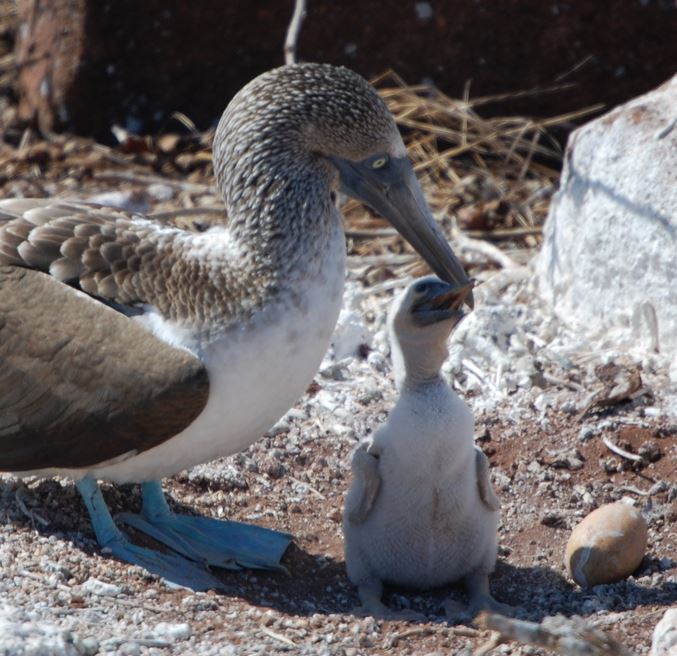We're open daily! View holiday hours
Science News
Blue-Footed Boobies Are Just Not In The Mood
May 13, 2014

By Jami Smith
The past 15 years have been rough on these little dancing birds. Scientists say that in the 1980s and 90s the Galápagos was teeming with thousands of individuals and hundreds of nests in their breeding colonies. Then, around 1998, breeding colonies suddenly emptied, fewer chicks were fledged, and population numbers began to drop.
Thinking the cause might be environmental, Dave Anderson, a biology professor at Wake Forest University, and his colleagues kept watch. When populations still hadn’t bounced back after three years, the researchers decided to do a comprehensive survey of the islands.
The team monitored four of the largest breeding colonies from May 2011 to June 2013. They found little to no breeding activity and only 134 fledged birds in those two years. For whatever reason, many birds were simply not reproducing.
"It was alarming," Anderson said. "This was a drastic change from the 1980s and 1990s, when young blue-foots were common throughout the archipelago."
The team estimated a total population of 6,423 boobies in 2012—less than one-third of the estimate in the 1960s.
Blue-footed boobies were no longer performing their happy mating dances, and they weren’t making new babies to replace the oldsters. Why?
The team ruled out predation, because other islands nearby—some with similar predators and some without—also exhibited low breeding rates. This suggested to the researchers that the cause was regional and possibly marine-based. They wondered if there might be a problem with the birds’ food source.
Previous studies of booby colonies showed that successful breeding generally occurred when the birds had diets consisting almost exclusively of sardines. But this Galápagos study showed sardines represented less than half of the boobies' diet. Could a lack of their preferred foods affect the birds’ productivity?
There have been notable drops in the Pacific sardine population in recent years. Although scientists aren't sure whether this population change is cyclical, tied to water temperatures or overfishing, it's clear that fewer sardines are available for Pacific seabird meals.
And although the low sardine numbers appear to be sufficient to keep the adults alive, they're not high enough to support successful breeding. "We think the main factor behind the decline is a scarcity of food," seabird biologist Kate Huyvaert said. "Whether that's natural or linked to anthropogenic change, we aren't sure."
Anderson said more investigation is important because the lack of breeding for the better part of two decades means that young birds are not replacing old ones. The majority of the population in the Galápagos is relatively old, and at some point, this elderly population will struggle to breed successfully even if food availability improves.
Similar drops in other bird populations have been noted off the California coast in recent years. See a Science Today video about it here.
The Galápagos study is published in the journal Avian Conservation and Ecology.
Jami Smith is a science-geek wannabe and volunteers for Science Today.
Image: Lieutenant Elizabeth Crapo, NOAA Corps